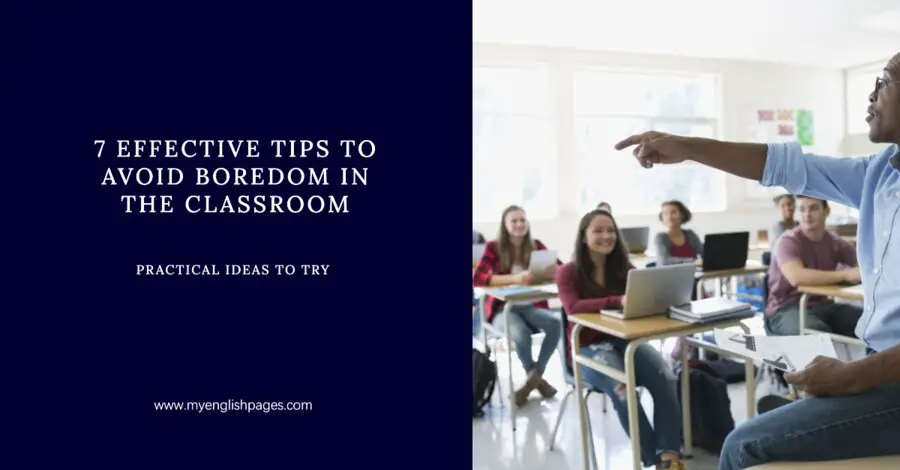Table of Contents
Introduction
Boredom in the classroom is one of the greatest enemies of successful learning. It often occurs when students can predict exactly what will happen next—the same routine, activities, and teaching style. This predictability kills engagement and makes lessons feel monotonous.
But what exactly makes a classroom feel boring—and how can teachers spot the warning signs?
What Causes Boredom in the Classroom?
Boredom doesn’t happen without reason. Common causes include:
- Predictability: Repetitive routines (same activities, same teaching style) make lessons feel monotonous.
- Lack of Challenge: Tasks that are too easy (or too difficult) fail to engage students mentally.
- Passive Learning: Lectures with no interaction or hands-on participation lead to disengagement.
- Irrelevance: Students lose interest when they don’t see how lessons connect to their lives or interests.
- Poor Classroom Environment: Uninspiring physical spaces (dull décor, rigid seating) can sap energy.
Recognizing these triggers is the first step toward fixing them. Now, let’s explore seven actionable strategies to combat boredom and re-energize your classroom.
The good news? Boredom isn’t inevitable. With intentional changes, teachers can transform disengagement into curiosity. Here are seven proven strategies to revitalize your classroom:
7 Effective Tips to Avoid Boredom in the Classroom

1. Break Your Own Teaching Patterns
Teachers often fall into predictable routines without realizing it. Shake things up by changing your usual habits:
- If you typically dress casually, wear formal attire one day.
- If you usually stand while teaching, try sitting for a change.
- If you’re normally energetic, slow down your pace for a lesson.
Small changes like these disrupt expectations and re-engage students’ attention.
2. Incorporate Variety in Activities
A fifty-minute lesson filled with only one type of task (e.g., writing exercises) will likely bore students. Instead:
- Alternate between discussions, group work, multimedia, and hands-on tasks.
- Switch topics or approaches mid-lesson to maintain interest.
Variety keeps the brain stimulated—but avoid randomness. Structure is still key.
3. Maintain Structure Without Monotony
While variety is essential, an unstructured class can feel chaotic. Balance creativity with organization by:
- Using clear lesson objectives so students understand the purpose.
- Sequencing activities logically (e.g., warm-up → instruction → practice → reflection).
A well-planned but dynamic lesson prevents boredom without sacrificing clarity.
4. Use Differentiated Learning Techniques
Students have different abilities, interests, and learning speeds. To keep everyone engaged:
- Offer multiple ways to learn (videos, readings, interactive games).
- Allow choices in assignments (e.g., “Write an essay or create a presentation”).
- Adjust difficulty levels so no one feels overwhelmed or under-challenged.
Differentiation ensures all students stay motivated and involved.
5. Adapt to Different Learning Styles
Every student absorbs information differently. Some thrive in discussions, while others prefer visual aids or hands-on activities. To minimize boredom:
- Assess students’ preferred learning styles (auditory, visual, kinesthetic).
- Mix teaching methods—combine lectures with diagrams, movement, or storytelling.
A multi-sensory approach keeps lessons fresh and inclusive.
6. Optimize the Classroom Environment
A dull, static setting can contribute to boredom. Refresh the learning space by:
- Rearranging desks for group work or circle discussions.
- Updating bulletin boards with student work or interactive displays.
- Adding flexible seating options (standing desks, floor cushions).
A dynamic physical space can boost engagement and creativity.
7. Keep Students Motivated
Boredom often stems from a lack of motivation. Reignite enthusiasm by:
- Connecting lessons to real-life applications (“Why does this matter?”).
- Using gamification (points, challenges, rewards).
- Encouraging student input in lesson planning.
For more motivation strategies, check out: 10 Tips for Motivating the Unmotivated Student
Final Thoughts
Boredom in the classroom isn’t inevitable. Teachers can create a lively, engaging learning environment by introducing variety, adapting to student needs, and keeping lessons interactive. Try implementing one or two of these strategies at a time—soon, you’ll notice a difference in student participation and enthusiasm.
What strategies do you use to fight classroom boredom?


